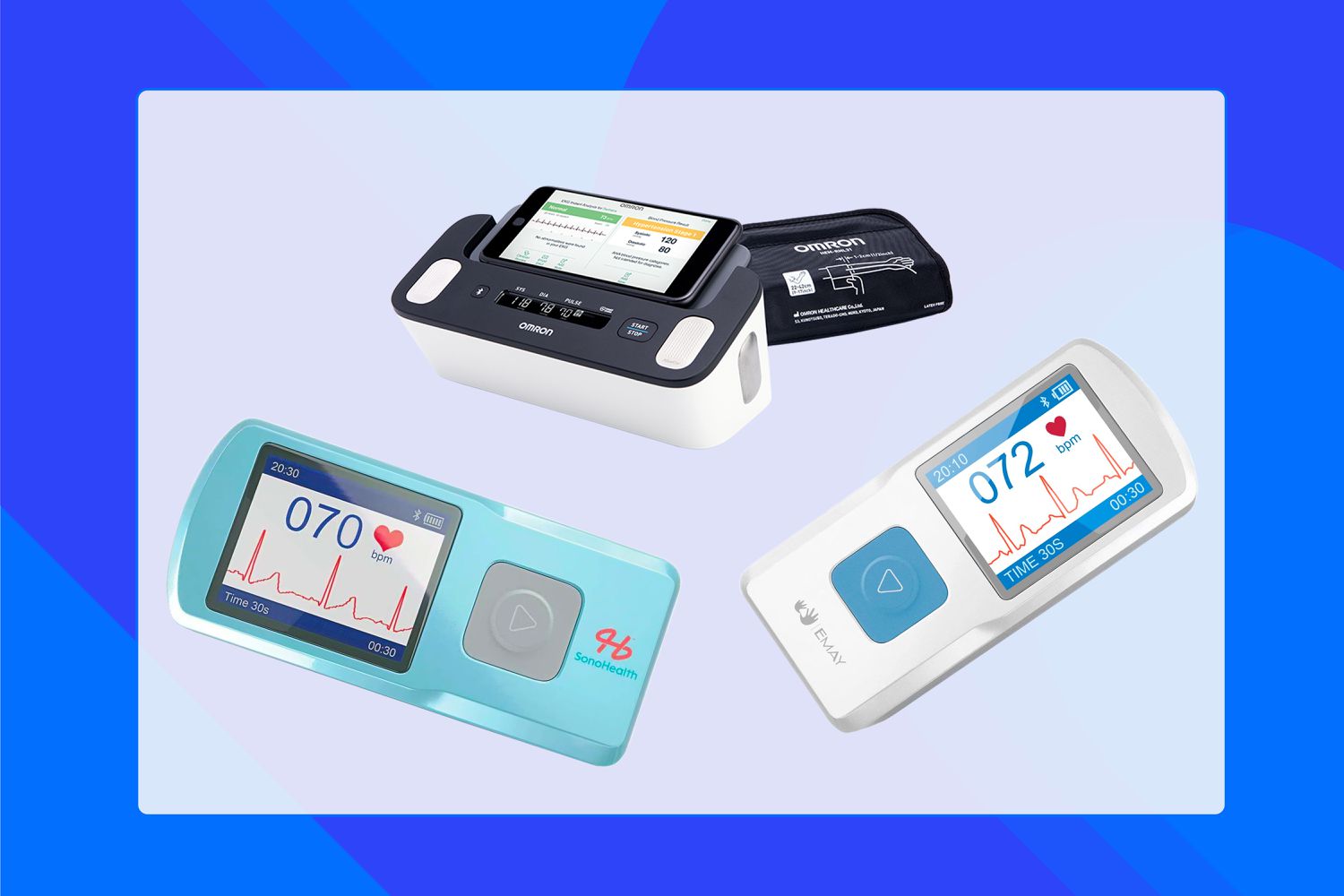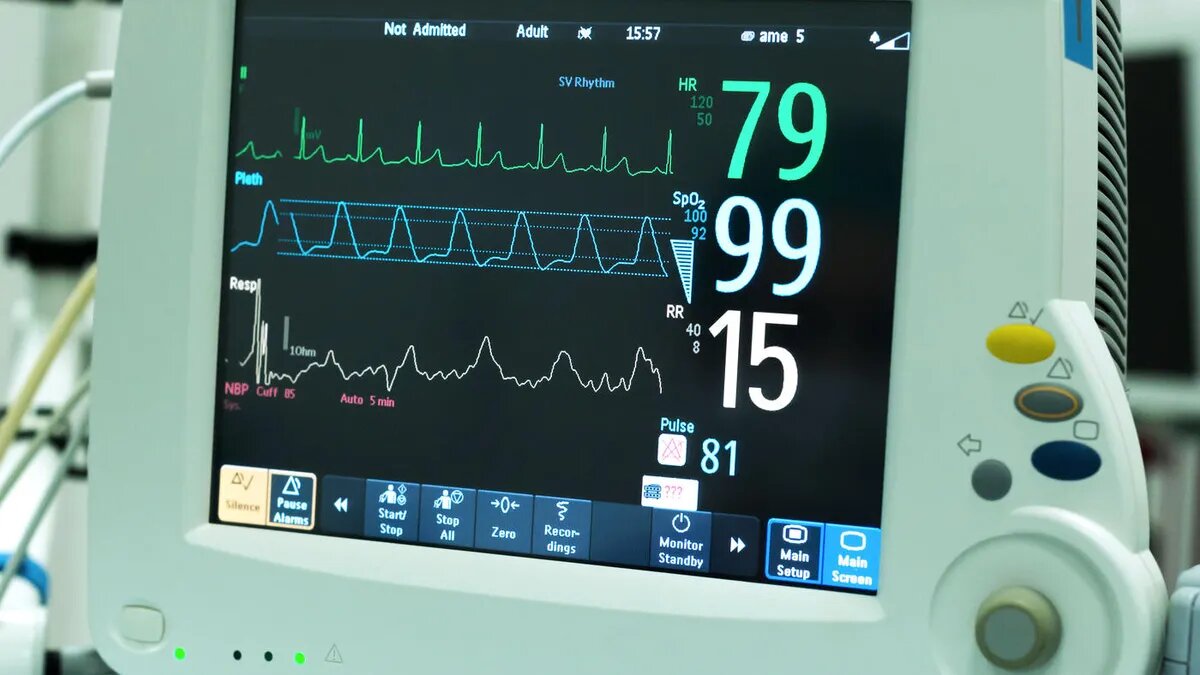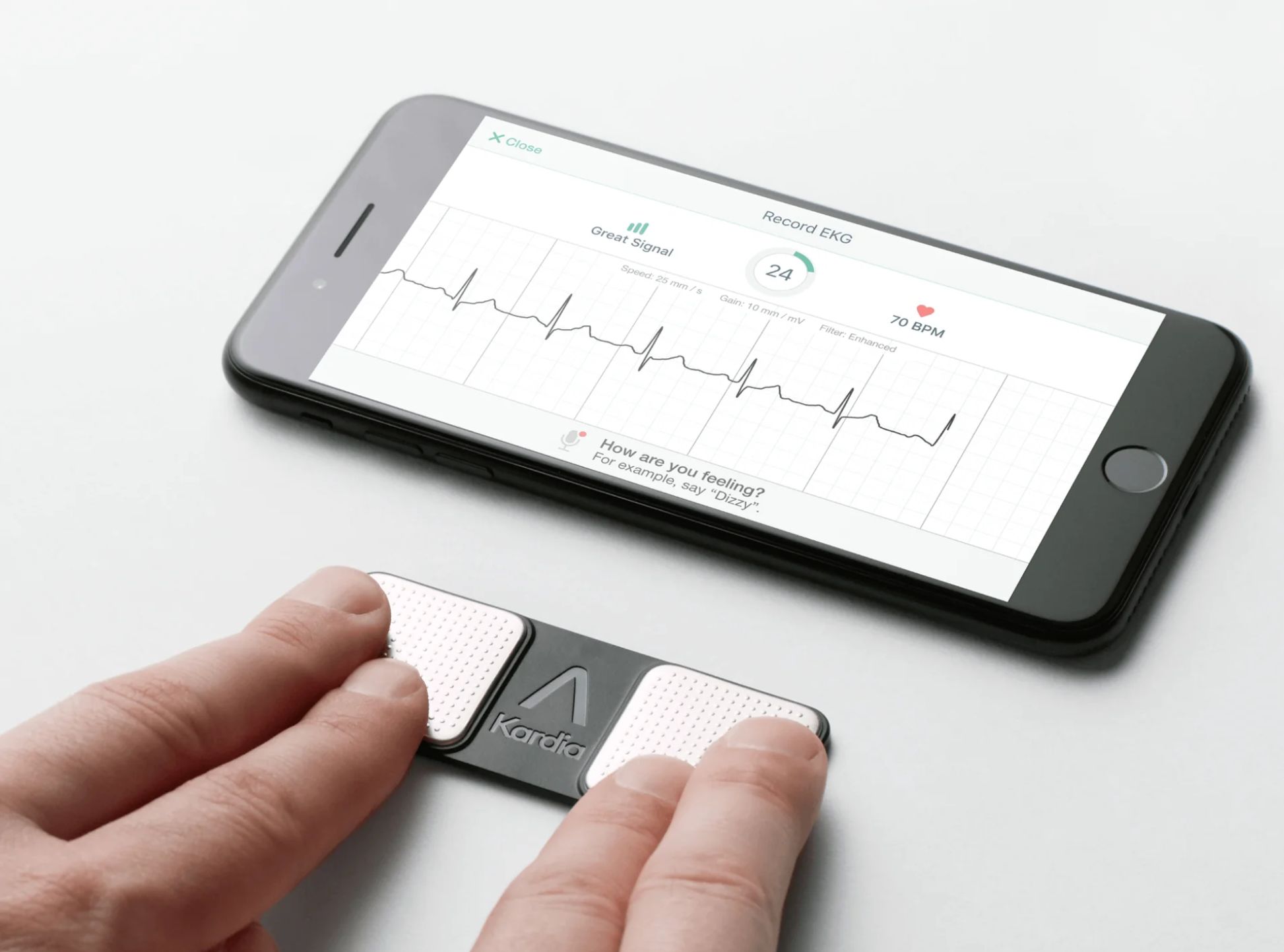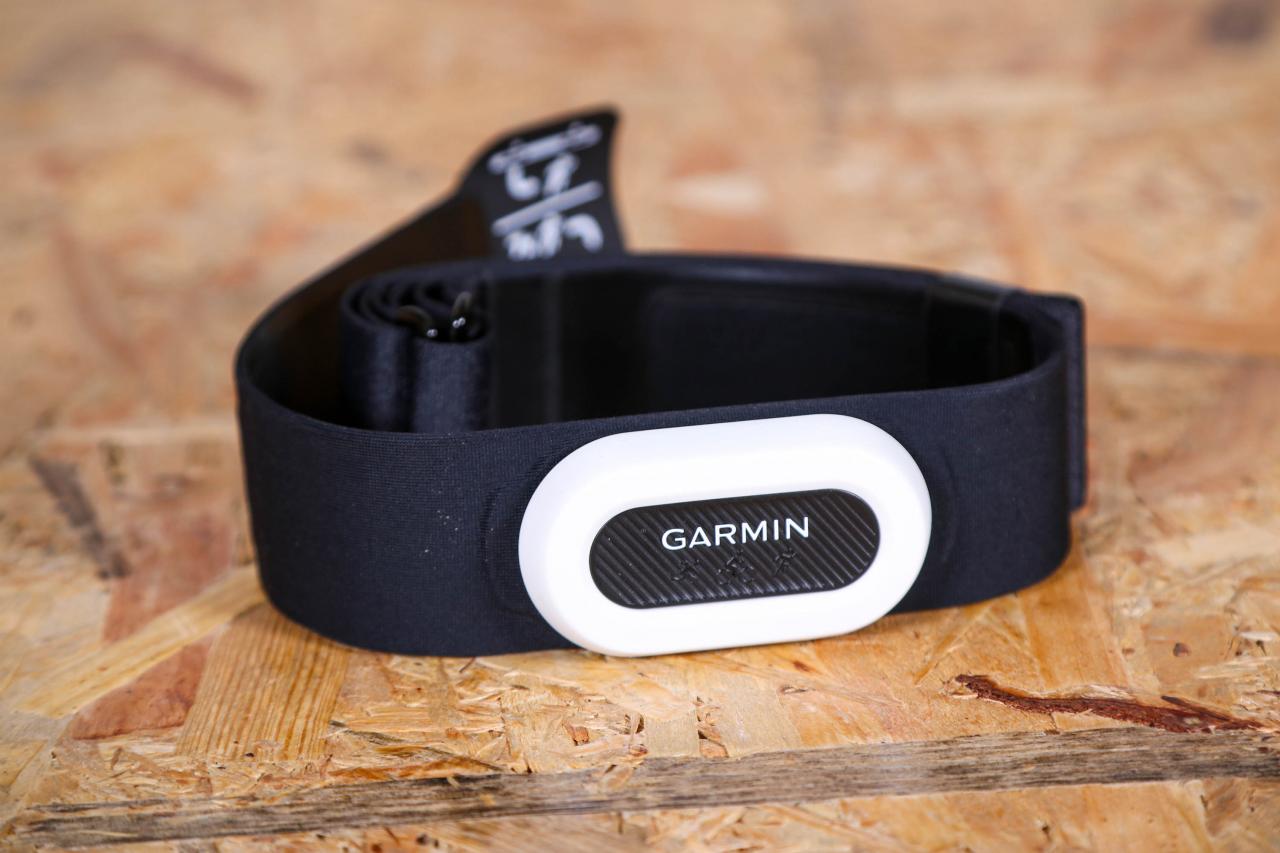Introduction
Welcome to the world of heart monitors, a technology that has revolutionized healthcare and fitness. Whether you are an athlete looking to optimize your training or someone concerned about their heart health, understanding what a heart monitor does is essential. In this article, we will explore the basic functions of a heart monitor, how it works, the different types available, and the benefits and potential risks associated with their use.
Heart monitors have become increasingly popular in recent years, as people are becoming more proactive about their health and well-being. These devices provide valuable insights into our cardiovascular activity, allowing us to monitor our heart rate, detect potential arrhythmias, and track our overall cardiac health. They are commonly used in medical settings, such as hospitals and clinics, for diagnostic purposes, but they have also made their way into the hands of everyday individuals who are looking to monitor their heart health.
A heart monitor, also known as a cardiac monitor or heart rate monitor, is a device used to measure the electrical activity of the heart. It typically consists of sensors that are placed on the body, either on the chest or the wrists, which detect the electrical signals generated by the heart. These signals are then converted into a readable format and displayed on a screen or transmitted wirelessly to a smartphone or other connected devices.
The primary purpose of a heart monitor is to measure and track the heart rate, which is the number of times the heart beats per minute. This measurement provides valuable information about the heart’s function and overall cardiovascular health. By continuously monitoring the heart rate, individuals can gain insight into the efficacy of their exercise routines, detect abnormalities or irregularities in heart rhythm, and make more informed decisions about their overall cardiovascular fitness.
In the next sections, we will delve deeper into how heart monitors work, the different types available, their benefits, potential risks and limitations, as well as some tips for using them safely. So, let’s get started and unravel the inner workings of this remarkable technology that has transformed the way we monitor and care for our hearts.
What is a Heart Monitor
A heart monitor, also known as a cardiac monitor or heart rate monitor, is a device that measures the electrical activity of the heart. It is primarily used to monitor and track the heart rate, which is the number of times the heart beats per minute. This information provides valuable insights into the heart’s function and overall cardiovascular health.
Heart monitors come in various forms, from simple wearable devices to complex medical-grade equipment used in hospitals and clinics. The basic principle behind all heart monitors is the detection and measurement of the electrical signals generated by the heart, known as electrocardiogram (ECG or EKG) signals. These signals are a representation of the heart’s contractions and relaxations, which are essential for pumping blood and maintaining circulation throughout the body.
The sensors of a heart monitor are typically placed on the body, either on the chest or the wrists, to detect the electrical signals. These sensors use electrodes or optical sensors to pick up the signals and transmit them to the monitor. The monitor then processes the information and displays it on a screen or transmits it wirelessly to a connected device like a smartphone or smartwatch.
The primary function of a heart monitor is to measure and track the heart rate. By continuously monitoring the heart rate, individuals can assess their cardiovascular fitness levels, optimize their exercise routines, and detect any abnormalities or irregularities in heart rhythm. This information is particularly useful for athletes looking to improve their performance, individuals recovering from heart-related conditions, and those with specific medical conditions that require close heart monitoring.
In addition to heart rate monitoring, some heart monitors also offer additional features such as tracking sleep patterns, monitoring stress levels, estimating calorie burn, and providing feedback on the intensity of the workout. These additional features can be beneficial for individuals looking to enhance their overall health and wellness.
Overall, heart monitors play a crucial role in modern healthcare and fitness. They provide individuals with valuable information about their heart’s activity, allowing them to make informed decisions about their cardiovascular health. By monitoring the heart rate and detecting any irregularities, heart monitors can aid in the early detection and prevention of potential heart-related issues. So, whether you are an athlete striving for peak performance or someone concerned about their heart health, a heart monitor can be an invaluable tool in maintaining a healthy heart and overall well-being.
How Does a Heart Monitor Work
Heart monitors, also known as cardiac monitors or heart rate monitors, utilize advanced technology to measure and track the electrical signals generated by the heart. These signals, known as electrocardiogram (ECG or EKG) signals, provide vital information about the heart’s activity and its overall cardiovascular health.
The process of how a heart monitor works can seem complex, but it can be broken down into several key steps. First, the monitor’s sensors, which are typically electrodes or optical sensors, are placed on the body in specific locations to detect the electrical signals. The most common placement of these sensors is on the chest or the wrists, as these areas have a higher concentration of blood vessels near the surface of the skin.
Once the sensors have been properly positioned, they begin to pick up the electrical signals generated by the heart as it contracts and relaxes. These signals are then transmitted to the monitor, either through wires or wirelessly via Bluetooth or other connectivity options. The monitor processes the signals, amplifies them if necessary, and converts them into a readable format.
The converted signals are displayed on the monitor’s screen, which can vary in size and complexity depending on the type of heart monitor being used. Some monitors have basic screens that show only the heart rate, while others have more advanced displays that provide additional information such as ECG waveforms, heart rhythm analysis, and even exercise metrics like calorie burn and intensity level.
Heart monitors utilize sophisticated algorithms and software to analyze the electrical signals and calculate the heart rate. These algorithms take into account factors such as the duration between each heartbeat, the amplitude of the electrical signals, and the presence of any abnormal patterns or arrhythmias. The accuracy of heart rate measurements may vary depending on the quality and calibration of the monitor.
In recent years, advancements in technology have allowed for the development of wearable heart rate monitors, such as smartwatches and fitness trackers. These devices often incorporate optical sensors on the wrist that use photoplethysmography (PPG) to measure blood flow and detect heart rate. This technology utilizes light sensors to detect changes in blood volume beneath the skin, which correspond to the heartbeats.
Heart monitors, whether standalone devices or integrated into wearable technology, have revolutionized the way we track and monitor our heart health. By providing real-time information about our heart rate and, in some cases, other heart-related parameters, heart monitors empower individuals to take a proactive approach to their cardiovascular well-being. They are invaluable tools for athletes, individuals with specific health conditions, and anyone looking to maintain a healthy heart.
Types of Heart Monitors
Heart monitors are available in a variety of forms, ranging from simple wearable devices to advanced medical-grade equipment. Each type of heart monitor offers unique features and capabilities, catering to different needs and preferences. Here are some of the common types of heart monitors available:
- Chest-Strap Heart Monitors: These heart monitors consist of a strap that is worn around the chest, with electrodes attached to the strap. The electrodes detect the electrical signals from the heart and transmit them to a display unit typically worn on the wrist or arm. Chest-strap heart monitors are often preferred by athletes and fitness enthusiasts due to their accuracy and reliability.
- Wrist Heart Monitors: Wrist heart monitors are worn on the wrist, like a watch or a fitness tracker. They use optical sensors to detect blood flow and measure the heart rate. These monitors are convenient and easy to use, making them popular among individuals who want continuous heart rate monitoring throughout the day. They are also commonly integrated into smartwatches and fitness trackers.
- Smartphone Heart Monitors: With advancements in mobile technology, smartphone heart monitors have become increasingly popular. These monitors use the built-in sensors and cameras of smartphones to measure the heart rate. Special apps are downloaded onto the smartphone, allowing users to place their finger on the camera lens or use the device’s built-in optical sensors to capture the heart rate. While convenient, smartphone heart monitors may not be as accurate as dedicated devices.
- Medical-Grade Heart Monitors: Medical-grade heart monitors are high-precision devices used in healthcare settings such as hospitals and clinics. These monitors provide comprehensive measurements of heart activity and other cardiac parameters, making them invaluable for diagnosing and monitoring heart conditions. Some medical-grade heart monitors are portable, allowing patients to wear them at home for extended periods to capture more accurate data.
- Exercise Heart Monitors: Exercise heart monitors are designed specifically for tracking heart rate during physical activity. These monitors often come with additional features such as calorie burn estimation, workout intensity analysis, and GPS tracking. They are commonly used by athletes, fitness enthusiasts, and individuals who want to optimize their exercise routines.
Regardless of the type, heart monitors play a significant role in monitoring and tracking heart health. The choice of the heart monitor depends on an individual’s specific needs, preferences, and budget. It is essential to consider factors such as accuracy, user-friendliness, and additional features when selecting a heart monitor that best suits your requirements.
Benefits of Using a Heart Monitor
Using a heart monitor offers numerous benefits for individuals looking to monitor and improve their cardiovascular health. Here are some of the key advantages of incorporating a heart monitor into your routine:
- Accurate Heart Rate Monitoring: A heart monitor provides accurate and real-time heart rate measurements. This information is crucial, as it allows individuals to gauge their cardiovascular fitness levels, track progress during workouts, and optimize the intensity of their exercises for maximum efficiency.
- Early Detection of Irregularities: Heart monitors can detect abnormal heart rhythms, known as arrhythmias, which may be indicative of underlying health conditions. Catching these irregularities early can lead to early intervention and treatment, reducing the risk of complications.
- Improved Training Performance: Athletes and fitness enthusiasts can benefit from heart monitors by tracking their heart rate zones during exercise. By monitoring their heart rate, they can ensure that they are working within the desired intensity range, optimizing training efforts and avoiding overexertion or inadequate effort.
- Motivation and Accountability: Heart monitors provide individuals with tangible data on their workouts and progress. This feedback can help boost motivation, as individuals can see the immediate impact of their efforts. It also promotes accountability and adherence to exercise routines, as individuals can actively track their performance.
- Awareness of Resting Heart Rate: Monitoring resting heart rate over time can provide valuable insights into overall cardiovascular health. A lower resting heart rate is often an indicator of improved fitness levels, while a higher resting heart rate might suggest underlying health issues or insufficient recovery between workouts.
- Remote Monitoring: Certain heart monitors allow remote monitoring, enabling healthcare professionals to track their patients’ heart health from a distance. This feature is particularly useful for individuals with chronic heart conditions or those recovering from cardiac procedures.
- Promotes Overall Heart Health: Regular use of a heart monitor encourages individuals to be mindful of their heart health and make lifestyle choices that support cardiovascular well-being. It serves as a reminder to engage in physical activity, manage stress, and follow a heart-healthy diet.
Using a heart monitor empowers individuals to take control of their heart health and make informed decisions about their fitness and overall well-being. However, it is important to remember that heart monitors are tools and should not replace professional medical advice. If you have any concerns or experience unusual symptoms, it is always recommended to consult with a healthcare professional.
When to Use a Heart Monitor
Knowing when to use a heart monitor can help individuals make the most out of this valuable tool for monitoring cardiovascular health. Here are some situations where using a heart monitor can be beneficial:
- During Exercise: Using a heart monitor during exercise is highly recommended, especially for individuals engaging in cardiovascular workouts. It allows you to monitor your heart rate and adjust the intensity of your workout accordingly. This helps ensure that you’re working within your target heart rate zone and reaping the maximum benefits from your exercise routine.
- Training for Endurance Events: If you’re preparing for a marathon, triathlon, or any other endurance event, a heart monitor can be an invaluable training companion. It helps you track your heart rate during long training sessions, ensuring that you don’t push too hard or overexert yourself, reducing the risk of injury or burnout.
- Recovering from Heart Conditions: Individuals recovering from heart-related conditions, such as heart attacks or heart surgery, can benefit from using a heart monitor. It allows them to closely monitor their heart rate and detect any abnormal patterns or signs of distress. This facilitates a safer recovery process and helps identify potential complications early on.
- Chronic Health Conditions: People with chronic health conditions, such as hypertension or diabetes, can use a heart monitor to keep track of their heart rate and assess how various factors, such as medication or lifestyle changes, may be affecting their cardiovascular health. Regular monitoring can provide important insights for managing these conditions effectively.
- Stress Management: Stress can have a significant impact on heart health. Using a heart monitor during periods of stress can help monitor changes in heart rate and identify triggers. This allows individuals to implement relaxation techniques or seek support to manage stress effectively and maintain a healthy heart.
- General Cardiovascular Wellness: Even if you are not dealing with any specific heart conditions, using a heart monitor as a part of your routine can promote proactive cardiovascular health. Regular monitoring provides insights into your heart’s response to exercise, stress levels, and overall fitness. It can motivate you to make healthier choices and maintain a balanced lifestyle.
While the use of a heart monitor is beneficial in these situations, it’s important to remember that individual circumstances may vary. Consulting with a healthcare professional, such as a cardiologist or a primary care physician, can provide personalized guidance on when and how to use a heart monitor effectively.
Potential Risks and Limitations of Heart Monitors
While heart monitors offer numerous benefits in monitoring cardiovascular health, it is important to be aware of their potential risks and limitations. Understanding these factors can help individuals use heart monitors effectively and avoid any potential harm. Here are some of the potential risks and limitations associated with heart monitors:
- Accuracy: Heart monitors may not always provide 100% accurate readings. Factors such as signal interference, improper placement of sensors, or device limitations can affect the accuracy of the measurements. It’s important to consider this when interpreting the results and consult with a healthcare professional if there are concerns about the accuracy of the readings.
- False Alarms: Heart monitors may occasionally trigger false alarms due to misinterpretation of electrical signals or other external factors. These false alarms can cause unnecessary anxiety and stress. It is essential to have a clear understanding of the monitor’s normal functioning and consult with a healthcare professional to differentiate between false alarms and genuine concerns.
- User Error: Improper placement of sensors, loose straps, or incorrect usage can lead to inaccurate readings or unreliable data. It is crucial to follow the manufacturer’s guidelines and properly calibrate and position the heart monitor to ensure accurate results.
- Dependency on Technology: Heart monitors rely on technology, and like any electronic device, they can malfunction or experience technical issues. Relying solely on a heart monitor for monitoring heart health without regular check-ups with healthcare professionals can lead to potential risks and misinterpretation of data.
- Limited Data Interpretation: Heart monitors provide heart rate data, but they may not offer a comprehensive analysis of other heart-related parameters or conditions. While they can detect irregular heart rhythms, they may not provide a complete diagnosis of specific heart conditions. Medical evaluation by a healthcare professional is necessary for a comprehensive assessment and diagnosis.
- Emotional Impact: Constant monitoring of heart rate and interpretation of data can cause anxiety and stress, particularly for individuals who may be overly concerned about their cardiovascular health. It is important to maintain a balanced perspective and consult with healthcare professionals for proper guidance and interpretation of heart monitor data.
It is crucial to use heart monitors as a tool to complement medical advice and professional healthcare monitoring. They should not replace consultations with healthcare professionals or be solely relied upon for diagnosis or treatment decisions. Understanding the limitations and potential risks associated with heart monitors helps individuals make informed choices and use these devices effectively for maintaining and monitoring cardiovascular health.
Tips for Using a Heart Monitor Safely
Using a heart monitor safely is essential to ensure accurate readings and minimize any potential risks. Here are some tips to consider when using a heart monitor:
- Read the User Manual: Familiarize yourself with the user manual and follow the manufacturer’s instructions for proper usage, sensor placement, and maintenance of the heart monitor. Each device may have specific guidelines that are important to understand.
- Ensure Proper Sensor Placement: Place the sensors or electrodes of the heart monitor in the correct locations as recommended by the manufacturer or healthcare professional. Proper placement allows for accurate readings and consistent monitoring.
- Calibrate the Heart Monitor: If your heart monitor requires calibration, make sure to calibrate it according to the instructions provided. Regular calibration helps maintain the accuracy of the readings.
- Monitor Your Heart Rate Responsibly: While monitoring your heart rate during exercise or other activities, listen to your body and avoid pushing beyond your limits. If you experience any discomfort or unusual symptoms, stop and consult a healthcare professional.
- Combine Heart Monitor Data with Professional Guidance: Utilize the heart monitor data as a tool to complement the advice and guidance provided by healthcare professionals. Regularly consult with a healthcare professional for a comprehensive assessment of your heart health and interpretation of the heart monitor data.
- Use Heart Monitors as Part of a Holistic Approach: Remember that heart monitors are just one component of maintaining a healthy heart. Incorporate other lifestyle factors such as regular exercise, a balanced diet, stress management, and sufficient rest to support overall cardiovascular well-being.
- Maintain Proper Hygiene: Keep the heart monitor and any associated accessories clean and dry. Follow the manufacturer’s guidelines for cleaning and storage to prevent any bacterial or fungal growth.
- Replace Batteries as Recommended: If your heart monitor uses batteries, make sure to replace them as per the manufacturer’s instructions. Low battery levels can affect the accuracy of the readings.
- Ensure Environmental Compatibility: Confirm that the heart monitor is suitable for the environment in which you plan to use it. Extreme temperatures, moisture, or other environmental conditions may affect the functioning and accuracy of the device.
By following these safety tips, you can utilize a heart monitor effectively and obtain accurate readings for monitoring your cardiovascular health. Remember to consult with healthcare professionals for personalized advice and interpretation of the data provided by the heart monitor.
Conclusion
Heart monitors have become indispensable tools for monitoring and managing cardiovascular health. These devices provide valuable insights into heart rate, rhythm, and overall cardiac performance. Whether you are an athlete looking to optimize your training or an individual concerned about heart health, a heart monitor can play a crucial role in maintaining and monitoring your cardiovascular well-being.
We explored the different types of heart monitors available, including chest-strap monitors, wrist monitors, smartphone monitors, and medical-grade monitors. Each type has its own set of features and functionalities to cater to various needs and preferences. It is essential to choose a heart monitor that aligns with your specific requirements and budget.
Using a heart monitor offers numerous benefits, such as accurate heart rate monitoring, early detection of irregularities, improved training performance, motivation, and awareness of resting heart rate. However, it is important to consider the potential risks and limitations associated with heart monitors, such as accuracy issues, false alarms, and dependency on technology.
To use a heart monitor safely, it is important to read the user manual, ensure proper sensor placement, calibrate the device if necessary, and combine the heart monitor data with professional guidance. Heart monitors should be seen as a tool to complement medical advice and should not replace regular check-ups with healthcare professionals or sound judgment.
Ultimately, incorporating a heart monitor into your routine can empower you to take control of your cardiovascular health. By monitoring your heart rate, detecting irregularities, and making informed decisions about your fitness and lifestyle, you can work towards maintaining a healthy heart and overall well-being. Remember, your heart is at the center of your health, and a heart monitor can be a valuable ally on your journey towards a stronger and healthier cardiovascular system.
























